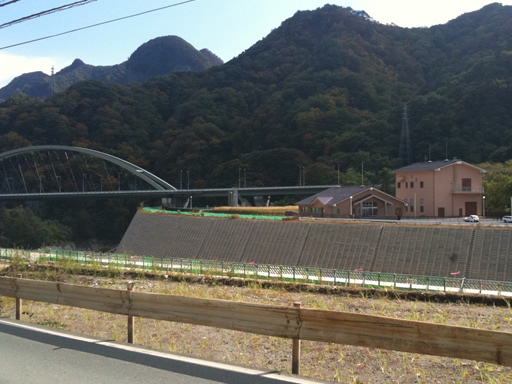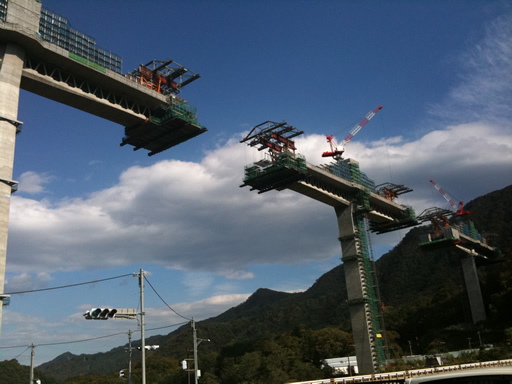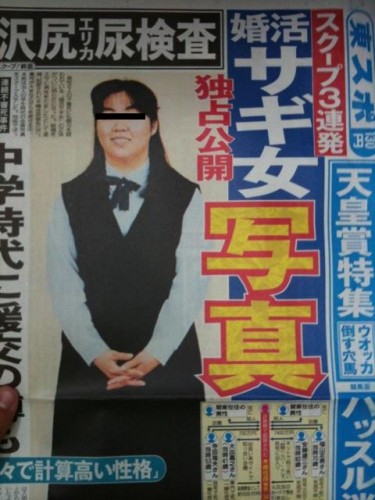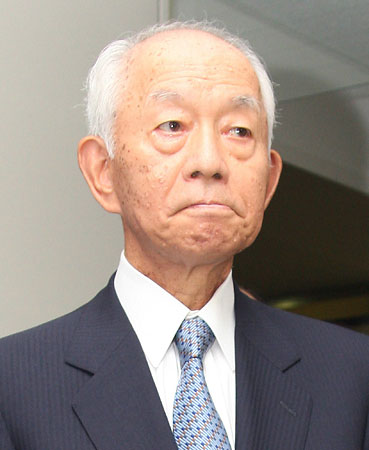Last week, I took a day trip out to see the Yamba Dam, a planned 130 meter high dam that would flood a small rural village snuggled in a valley in western Gunma. The primary motivation for the plan is to stop flash floods that rage through the Tonegawa River and cause havoc in Gunma, Saitama and Tokyo once a decade or so, and also to control and manage the water supply for the Kanto region and to generate power. If constructed it would only be Japan’s 25th largest dam and 10th largest reservoire, but it has turned into one of the more costly projects because of the massive peripheral infrastructure built to appease fierce local opposition.
The project has long been controversial and has dominated the headlines since the DPJ took power last month and announced the project would be cancelled — despite the fact that the project has burned through more than 70% of its US$4 billion budget.
As a student in the Robert D. Kaplan school of national policy, I wanted to see this project with my own eyes, and see the entire surrounding landscape, not suddenly arriving by train or car. So I took my bicycle by shinkansen out to Karuizawa in Nagano, from where I traveled north over the ride of Mt. Asama, then down into the valleys of Gunma and east into the valley, for a total day trip of more than 100 kilometers. This post summarizes my trip.
Traveling to the Dam
It’s easiest to feel the scale of the project by traveling from the west of the dam, down the river valley north of Mt. Asama in Nagano. As you approach the project, there are suddenly new bridges, most complete or near complete, covering imaginary areas of water. There is also the classic concrete lining of a natural water source that can be seen all over Japan. There are also brand new buildings sitting on the side of what will be a new lake.

Traveling towards the dam brings the existing road “deeper” into the future lake, which brings us to the representative structure of the project, the No. 2 Yamba Dam bridge. The bridge is unique for its hollow structure and that they are building simultaneously out from the supporting stems. This bridge will permit road and rail to cross the lake and connect the two halves of the community. At present, there was also a JR line running through the town, which was also to be relocated up the mountain.

You may notice that construction on the bridge is proceeding. The reasons for that soon became clear.
“Yamba Kan” (やんば館)
At the foot of the No. 2 Yamba Dam bridge sits a two-story facility called the “Yamba Kan,” built in 1999 by the Ministry of Land and Infrastructure to explain the dam’s purpose and its construction to locals and other interested visitors. Like a typical Japanese shiryoukan, it is a small but carefully organized and boasts an impressive set of topographical maps, audio-visual media, photographs, and information regarding the history and construction of the dam. There are also guides on hand to answer questions about the project.
Interest has exploded since the DPJ took power and have announced the cancellation of the dam. According to the informational (and pro-dam) website damnet.org, the number of visitors to the “Yamba Kan” hit a record in September, receiving three times as many visitors as in August. When I arrived on a weekday afternoon, the 40 car parking lot was full, and included a chartered tour bus.
The guides were busy answering visitor questions. I patiently waited my turn to ask questions and finally got to ask: “The government has said they will stop construction on the dam but the bridge is still being constructed, why is that?” I asked in the most neutral of tones, but the guide answered on the assumption that I was an anti-dam fanatic — she responded, “They have to finish it! There is no other option! Otherwise are community will be split in two! There are already people living in homes on both sides of the mountain!”
Her explanation and the Yamba Kan maps made the overview of the project more clear. Before the dam could be built, the government had to relocate all 355 households whose homes would be submerged by the lake created by the dam. After decades of fierce opposition, it was only when the central government conceded on a costly compromise to relocate the villagers up the mountain up the mountain from their homes did they finally agree. This is more expensive than it sounds, and calls for massive earthworks and bridges. It would have been easiest to move the people up or down the valley to join their neighbors.
Yet the project is even more expensive than just moving people up the valley mountains. The mountains are too steep to be flattened to accomodate the whole community on one side of the steep valley, so construction has taken place on two sides of the lake, with massive bridges being constructed to connect the two sides of the lake. The government is of course footing the bill to construct the new houses, schools, roads, bridges, and other facilities for the relocated community.
Most of this construction is completed, as evidenced by the almost finished No. 2 Yamba Dam bridge. But once all this is done, I started to ask myself,
What happens now?
Frankly, no matter how hard Transportation Minister Maehara and the DPJ hold out on refusing to construct the dam, I can’t possibly see how the project cannot be finished. At best the DPJ can delay the plan a year or two. Here’s why:
* All the preliminary infrastructure is complete. Learning more at the Yamba Kan, my understanding of recent news stories where the DPJ said that they would continue to invest in “lifestyle” construction became clear. The DPJ will only halt construction on the dam itself, which was scheduled to commence shortly, but will continue construction that affects the lives of the locals. In other words, the bridge will be finished, as will the rest of the construction, but the dam for which all the construction was invested will not be built. What this means is that billions will be spent relocating a community for no reason whatsoever.
* It could cost votes in important prefectures. The DPJ probably isn’t too worried that the conservative, LDP-allied governors of Nagano, Gunma, Chiba and Tokyo are opposed to halting the project. But the governors of Saitama and Tochigi are independents close to the DPJ. The DPJ caucus of legislators in the Saitama prefectural assembly is vocally opposed to the cancellation. The six affected prefectures together comprise more than 25% of Japan’s total population, and the DPJ has strong voter support in Tokyo, Chiba, and Saitama. The only people firmly opposed to the plan appear to be environmental interest groups. Who knows, it could cost the DPJ votes and they may decide to proceed because of it.
* A future LDP administration may turn things around. Even if the Hatoyama administration does refuse to proceed with the plan, the LDP could always pick up where the DPJ left off.








